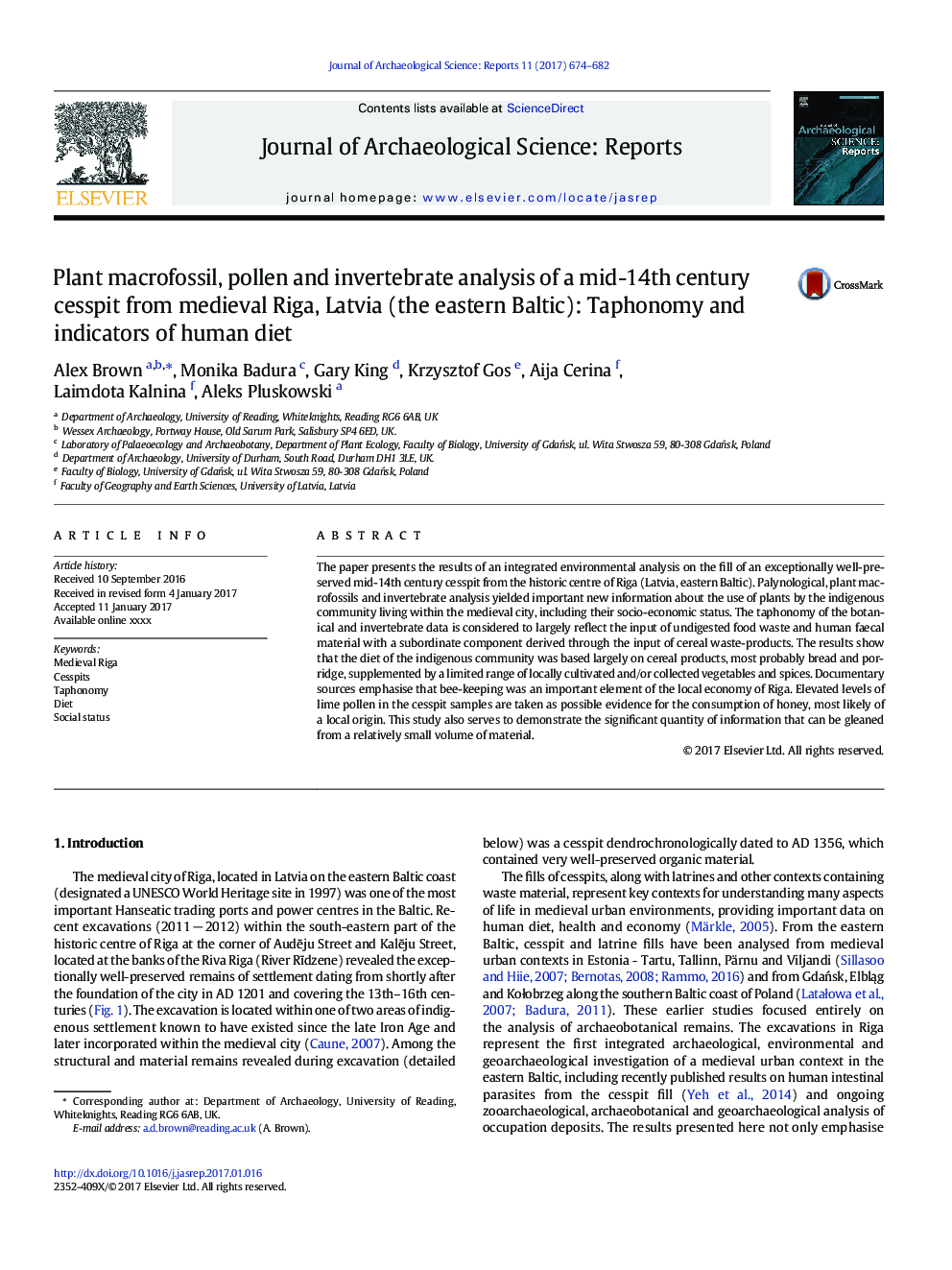| Article ID | Journal | Published Year | Pages | File Type |
|---|---|---|---|---|
| 5112595 | Journal of Archaeological Science: Reports | 2017 | 9 Pages |
Abstract
The paper presents the results of an integrated environmental analysis on the fill of an exceptionally well-preserved mid-14th century cesspit from the historic centre of Riga (Latvia, eastern Baltic). Palynological, plant macrofossils and invertebrate analysis yielded important new information about the use of plants by the indigenous community living within the medieval city, including their socio-economic status. The taphonomy of the botanical and invertebrate data is considered to largely reflect the input of undigested food waste and human faecal material with a subordinate component derived through the input of cereal waste-products. The results show that the diet of the indigenous community was based largely on cereal products, most probably bread and porridge, supplemented by a limited range of locally cultivated and/or collected vegetables and spices. Documentary sources emphasise that bee-keeping was an important element of the local economy of Riga. Elevated levels of lime pollen in the cesspit samples are taken as possible evidence for the consumption of honey, most likely of a local origin. This study also serves to demonstrate the significant quantity of information that can be gleaned from a relatively small volume of material.
Keywords
Related Topics
Social Sciences and Humanities
Arts and Humanities
History
Authors
Alex Brown, Monika Badura, Gary King, Krzysztof Gos, Aija Cerina, Laimdota Kalnina, Aleks Pluskowski,
